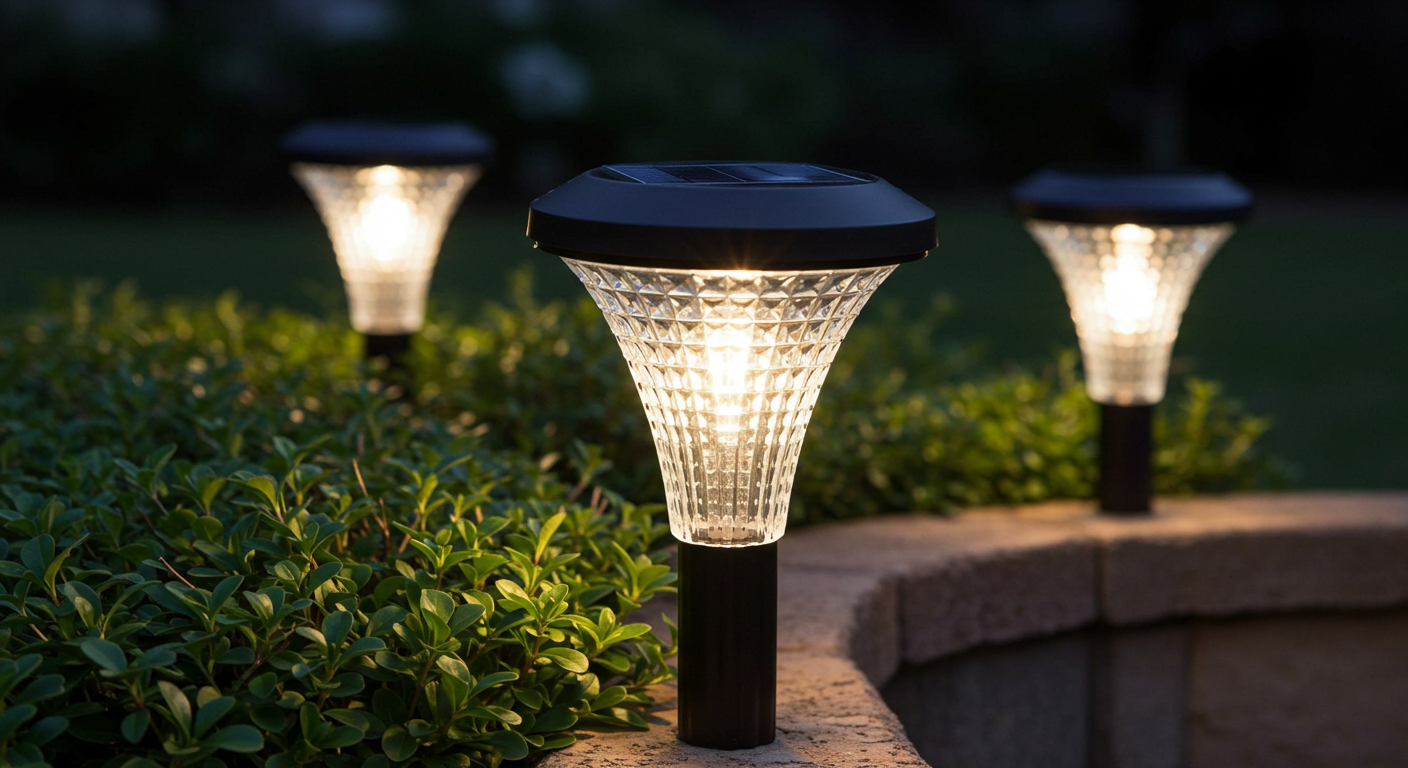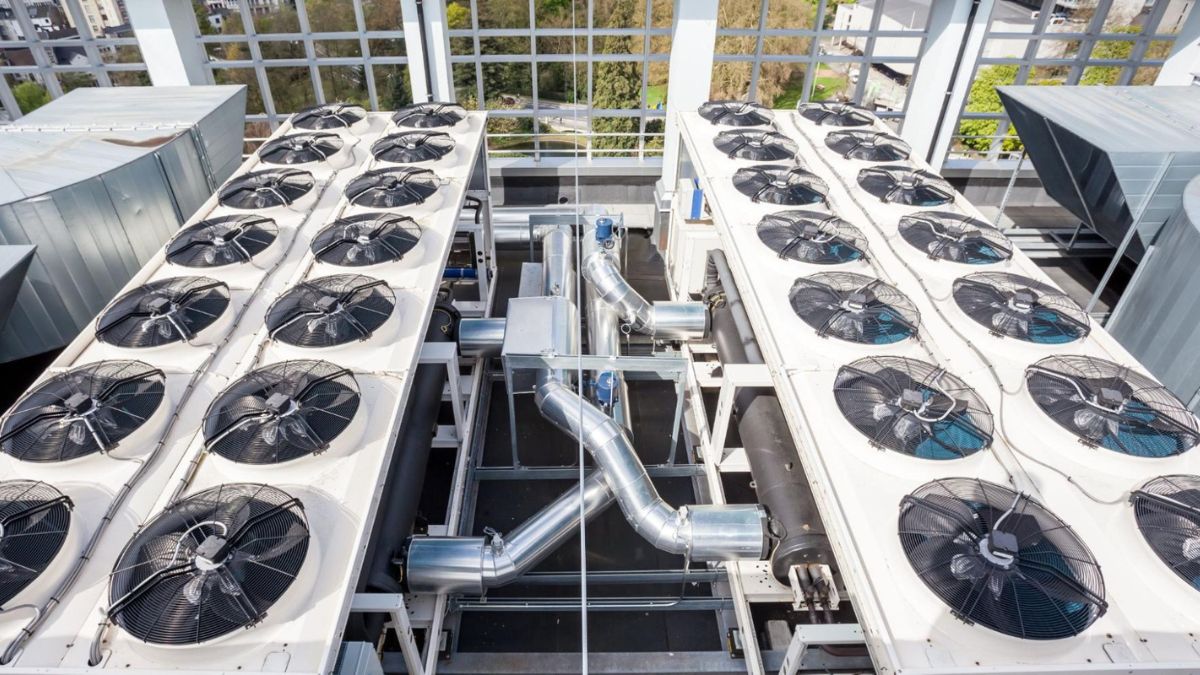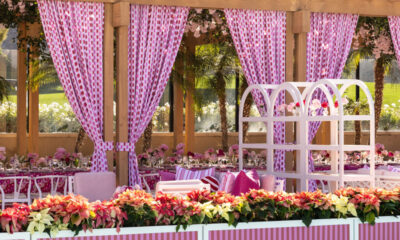Home
Outdoor Solar Lights: Brightening Your Outdoor Spaces with the Power of the Sun

Outdoor solar lights have become a popular choice for illuminating gardens, pathways, and other outdoor spaces. They offer an eco-friendly and cost-effective alternative to traditional electric lighting. This article explores the benefits, types, installation tips, maintenance, and creative uses of outdoor solar lights.
How Outdoor Solar Lights Work
Outdoor solar lights operate on a surprisingly simple principle. Each light contains a small solar panel that converts sunlight into electricity during daylight hours. This electricity charges a battery inside the light. When darkness falls, a sensor detects the lack of light and triggers the light to turn on, using the energy stored in the battery.
Most outdoor solar lights use LED (Light Emitting Diode) bulbs, which are highly efficient and use very little power. This allows the lights to stay on for many hours using just the energy collected during the day. Depending on the model and how much sunlight they receive, outdoor solar lights can provide illumination for anywhere from 8 to 12 hours or more.
Key Components
Solar Panel
Captures sunlight and converts it to electricity through photovoltaic cells.
Battery
Stores the collected energy (usually rechargeable) for use after dark.
Light Sensor
Detects when it’s dark enough to turn on the light automatically.
LED Bulbs
Provide the actual light output using minimal energy.
Housing
Protects all components from weather and provides the aesthetic design.
One of the best things about outdoor solar lights is their completely wireless operation. Since they generate and store their own power, you don’t need to connect them to your home’s electrical system. This makes installation as simple as placing the light where you want it – no digging, wiring, or hiring an electrician required!
Benefits of Choosing Outdoor Solar Lights
Energy Savings
Perhaps the most obvious advantage of outdoor solar lights is that they use free energy from the sun. Once you’ve purchased the lights, there are no ongoing electricity costs. This can lead to significant savings, especially if you’re lighting a large area or using multiple lights.
Environmental Advantages
Zero Emissions
Outdoor solar lights produce no carbon emissions during operation. By choosing solar over traditional electric lights, you’re reducing your carbon footprint and helping to combat climate change. They’re a perfect choice for environmentally conscious homeowners.
Reduced Resource Use
Solar lighting reduces demand on the electrical grid and the resources needed to generate that electricity.
Installation Benefits
No Wiring Required
As mentioned earlier, outdoor solar lights don’t require any wiring. This makes them incredibly easy to install – simply place them where they’ll receive good sunlight during the day. There’s no need to hire an electrician or worry about finding outdoor electrical outlets.
DIY-Friendly
Almost anyone can install outdoor solar lights without special tools or skills.
Maintenance Considerations
Low Upkeep
Modern outdoor solar lights are designed to be very low maintenance. The LED bulbs typically last for many years, and the rechargeable batteries can usually go several years before needing replacement. Most solar lights are also weather-resistant and can withstand rain, snow, and heat.
Simple Cleaning
Occasional cleaning of the solar panel is usually all that’s required to maintain performance.
Practical Advantages
Flexibility and Portability
Since they don’t need to be connected to an electrical supply, outdoor solar lights can be placed virtually anywhere that receives sunlight. This gives you complete flexibility in your outdoor lighting design. You can also easily move them if you decide to change your garden layout or if you move to a new home.
Safety Features
With no electrical wiring required, outdoor solar lights eliminate the risk of electric shocks. This makes them particularly safe for homes with children or pets. They’re also safe to use near water features, pools, or in areas that flood occasionally.
Automatic Operation
Most outdoor solar lights have built-in sensors that automatically turn them on at dusk and off at dawn. This means you don’t have to remember to switch them on and off, making them a convenient “set and forget” lighting solution.
Installation Locations
Solar wall lights are mounted on vertical surfaces like fences, siding, or garden walls. They’re great for illuminating entryways, patios, decks, and other areas adjacent to structures.
Specialized Uses
Some models are designed specifically for illuminating house numbers or mailboxes, making your home easier to find at night.
Design Varieties
These come in numerous styles from modern to traditional to match your home’s exterior.
Decorative and Accent Lighting
String Lights
Solar string lights consist of multiple small bulbs connected by a wire, with a solar panel that can be staked into the ground. They’re perfect for creating a festive or cozy atmosphere on patios, decks, pergolas, or wrapped around trees. Solar string lights come in various styles, from classic white to multicolored options and even novelty shapes like stars or flowers.
Lanterns and Figurines
These outdoor solar lights focus more on style and creating ambiance rather than providing functional lighting. They come in countless designs, including lanterns, torches, globes, animal figures, and color-changing models. Decorative solar lights can add personality and charm to your garden or outdoor living areas.
Floating Lights
Designed for ponds, pools, and other water features, floating solar lights add a magical touch to water elements in your landscape. During the day, they charge in the sun while floating on the water’s surface. At night, they create beautiful reflections on the water.
Security Lighting
Motion Detection
Solar security lights are designed with brightness and coverage in mind. They often include motion sensors that trigger brighter illumination when movement is detected. This helps conserve battery power while still providing security benefits.
Brightness and Coverage
These typically offer the highest lumen output among solar lights, sometimes reaching 1000+ lumens.
Additional Features
Some models also include features like alarms or the ability to connect to home security systems.
Factors to Consider When Choosing Outdoor Solar Lights
Light Performance
Brightness Requirements
The brightness of outdoor solar lights is typically measured in lumens. Path lights may offer anywhere from 5 to 100 lumens, while security floodlights might provide 700 lumens or more. Think about what you’re trying to illuminate and how bright you need the light to be. Remember that very bright lights may not be appropriate in all settings, especially in residential neighborhoods where they might shine into neighbors’ windows.
Light Duration
Consider how long you need the lights to stay on each night. Most quality outdoor solar lights will operate for 8-12 hours when fully charged.
Light Color and Temperature
Outdoor solar lights are available in different color temperatures, measured in Kelvins (K). Lower temperatures (2700-3000K) produce a warm, yellowish light similar to traditional incandescent bulbs, creating a cozy, inviting atmosphere. Higher temperatures (5000-6000K) create a cooler, bluish-white light that’s brighter and more similar to daylight. Some decorative models offer color-changing options or specific colors like blue, red, or green for aesthetic purposes.
Environmental Considerations
Sunlight Exposure
For outdoor solar lights to work effectively, their solar panels need good exposure to sunlight. Before purchasing, assess your yard and identify areas that receive at least 6-8 hours of direct sunlight daily. Lights placed in partial shade will still work but may not shine as brightly or for as long.
Panel Adjustability
Some high-end models have separate, adjustable solar panels that can be positioned to catch maximum sunlight even if the light itself needs to be in a shadier spot.
Climate Compatibility
Consider your local climate. Extreme temperatures (both hot and cold) can affect battery performance and longevity.
Construction Quality
Weather Resistance
Since outdoor solar lights will be exposed to the elements year-round, durability is crucial. Look for models with good weather resistance ratings, particularly if you live in an area with extreme weather conditions. Most quality solar lights are designed to be waterproof or at least weather-resistant, but some are more durable than others. Check the IP (Ingress Protection) rating – the higher the number, the better the protection against dust and water.
Material Quality
The materials used in outdoor solar lights affect both their appearance and longevity. Plastic models are typically less expensive but may degrade faster under UV exposure. Metal lights (especially stainless steel, aluminum, or copper) generally last longer and often look more premium, though they come with a higher price tag. Glass components add elegance but may be more fragile.
Battery Capacity
Battery capacity affects how long your lights will shine each night. Lights with larger battery capacities can store more energy and typically provide illumination for longer periods. This is especially important if you live in an area with shorter winter days or frequent cloudy weather. Look for lights with batteries that can hold enough charge to last through the night.
Maintaining Your Outdoor Solar Lights
Regular Care
Panel Cleaning
Dust, dirt, pollen, and bird droppings can accumulate on solar panels, reducing their efficiency. Clean the panels regularly with a soft cloth and mild soapy water. Avoid abrasive cleaners that might scratch the surface. A clean panel can improve charging efficiency by 20-30%.
Winter Maintenance
If you live in a snowy climate, gently brush snow off the solar panels when needed. Even a thin layer of snow can significantly reduce charging capability.
Inspection Schedule
Establish a regular schedule to check that all lights are functioning properly. Spring and fall are good times for a thorough inspection.
Component Maintenance
Battery Care
Most outdoor solar lights use rechargeable batteries that eventually need replacement (typically every 1-3 years, depending on quality). When performance begins to decline (shorter run times or dimmer light), consider replacing the batteries. Most use standard rechargeable AA or AAA batteries that can be purchased at any hardware store.
Housing Inspection
Check for cracks, moisture infiltration, or other damage to the light housing that might allow water to reach electronic components.
Sensor Cleaning
Keep light sensors clean and free from debris that might interfere with their operation.
Seasonal Considerations
Winter Storage
If you live in an area with extreme winters, you might want to store certain types of outdoor solar lights during the harshest months. Before storage, clean them thoroughly, remove the batteries if possible, and store in a dry location.
Spring Repositioning
After winter, reassess the positioning of your lights as foliage growth may create new shade patterns.
Sensor Verification
If your lights aren’t turning on automatically at dusk, the light sensor might be dirty or malfunctioning. Clean around the sensor area and test again. Some lights have a small switch that can be used to override the sensor for testing purposes.
Practical Applications
Emergency Preparedness
Keep a few portable outdoor solar lights accessible for power outages. They can provide emergency lighting both indoors and out when electricity is unavailable.
Address Visibility
Use a small solar spotlight to illuminate your house number at night, making it easier for visitors or emergency services to find your home.
Dark Corner Illumination
Use solar lights to brighten dark corners of your property that might otherwise be safety hazards.
The Future of Outdoor Solar Lighting
Technological Advancements
Increased Efficiency
Newer solar panels can convert more sunlight into electricity, even in less-than-ideal conditions. This means future outdoor solar lights will provide brighter illumination and longer run times, even with smaller panels or during winter months.
Better Batteries
Improvements in battery technology are leading to longer-lasting, more efficient energy storage. This allows outdoor solar lights to stay brighter for longer periods and extends the overall lifespan of the products.
Miniaturization
As technology improves, solar cells and batteries are becoming smaller while maintaining or improving performance.
Smart Technology Integration
Connectivity Features
Expect to see more outdoor solar lights that connect to home automation systems, allowing you to control them via smartphone apps or voice assistants. Some might also collect data on weather patterns to optimize their performance automatically.
Adaptive Programming
Future lights might adjust brightness based on usage patterns, weather forecasts, or even user proximity.
Security Integration
Integration with home security systems will become more sophisticated, with solar lights responding to security conditions.
Design Evolution
Improved Aesthetics
As the technology becomes more refined, designers have greater freedom to create outdoor solar lights that blend seamlessly with various architectural and landscape styles. The obvious “solar panel look” is giving way to more elegant, integrated designs.
Material Innovations
New materials that are more durable and environmentally friendly while still being attractive.
Customization Options
More options for consumers to personalize the appearance and function of their lighting.
Expanded Functionality
Multi-functional Lighting
Some manufacturers are developing outdoor solar lights that serve multiple purposes, such as combining lighting with security cameras, Wi-Fi extenders, or even insect repellent features.
Environmental Sensors
Lights that can monitor air quality, precipitation, or other environmental factors.
Expanded Color Options
More sophisticated color-changing capabilities beyond the basic options available today.
Conclusion
Outdoor solar lights represent one of the easiest and most effective ways to enhance your home’s exterior. They combine practical benefits like improved safety and security with aesthetic advantages that boost your property’s appearance and create ambiance.
From simple path lights to elaborate decorative fixtures, outdoor solar lights offer solutions for virtually every lighting need. Their eco-friendly operation, easy installation, and minimal maintenance requirements make them an attractive option for any homeowner.
Home
Home Insulation Solutions for Energy-Efficient Living

Transforming your home into an energy-efficient space is essential in today’s world, offering substantial benefits in reducing utility costs and lowering your environmental footprint. At the heart of this transformation lies effective insulation, which helps maintain steady indoor temperatures year-round, lessening the strain on your heating and cooling systems. Whether you’re retrofitting an older home or building a new one, understanding and choosing the right Massachusetts insulation solutions can make a significant difference in energy savings and comfort.
Proper home insulation not only ensures comfort but also plays a pivotal role in combating climate change by minimizing residential energy consumption. By sealing your home’s envelope with the right insulation materials and methods, you create a more stable, pleasant environment that withstands seasonal extremes while also controlling long-term costs.
Advancements in insulation products and installation techniques have made it easier to customize solutions for every home and climate, allowing homeowners to maximize both performance and sustainability. By prioritizing home insulation, you take a step toward a more efficient, resilient, and eco-friendly lifestyle.
If you’re searching for experienced professionals to guide your upgrade, a reputable insulation company can provide expert advice and quality workmanship to ensure your project’s success.
Importance of Home Insulation
Home insulation is a fundamental element in creating a comfortable indoor environment year-round, as it regulates heat flow in and out of your living spaces. According to the U.S. Department of Energy, effective insulation can save homeowners up to 20% on heating and cooling costs, or up to 10% on total energy costs, by adding insulation to attics, floors, crawl spaces, and accessible basement rim joists, and by reducing unwanted air leaks all around your house.
Well-insulated homes experience fewer drafts, more consistent temperatures, and improved air quality. In addition to comfort, proper insulation reduces the workload on heating and cooling systems, extending their lifespan and lowering maintenance costs. On a larger scale, reducing your home’s energy demand helps mitigate greenhouse gas emissions—an important step toward broader environmental sustainability.
Types of Insulation Materials
With several insulation materials available, selecting the best fit for your home depends on climate, budget, and project scope. Here’s a look at the most common types:
- Fiberglass: Widely used for its affordability and performance, fiberglass batts are ideal for attics and wall cavities.
- Spray Foam: Applied as a liquid that expands into a hardened foam, spray foam excels at sealing gaps and providing high R-values, making it an excellent choice for attics, basements, and crawl spaces.
- Cellulose: Made from recycled paper products, cellulose is both eco-friendly and adept at filling irregular spaces, reducing drafts and air leakage.
- Aerogel: Known for remarkable thermal resistance in a compact form, aerogel is perfect for space-limited projects and areas where maximum insulation is needed without bulk.
Each type has unique strengths; consider consulting trusted sources and professionals to determine the right approach for your property.
Key Areas to Insulate
For optimal results, it’s important to target the most critical parts of your home during an insulation upgrade:
- Attics: Insulating the attic prevents winter heat loss and keeps out summer heat.
- Walls: Proper wall insulation reduces energy loss between the interior and exterior, enhancing overall efficiency.
- Basements and Crawl Spaces: These areas are often overlooked but essential, as they can contribute to heat loss and moisture problems.
- Windows and Doors: Sealing gaps and upgrading to energy-efficient models reduces drafts and curbs energy waste.
Innovative Insulation Techniques
The latest advancements in insulation go beyond traditional materials, integrating technology and adaptive solutions for even greater efficiency:
- Smart Insulation Systems: Incorporate IoT-enabled sensors that monitor and adjust a home’s insulation performance in real time, leading to continuous comfort and savings.
- Adaptive Insulation: These newer materials change their properties in response to heat or cold, offering dynamic protection that adapts to seasonal fluctuations and weather events.
Government Initiatives and Incentives
Many governments are investing in energy efficiency through rebates, tax credits, and direct funding for insulation improvements. In the UK, the Great British Insulation Scheme aims to upgrade the energy efficiency of homes nationwide, especially those belonging to vulnerable groups. Similarly, homeowners in the United States can take advantage of federal and state-level incentives to offset the cost of materials and installation—for example, the Energy Efficient Home Improvement Credit.
Steps to Enhance Home Insulation
- Conduct an Energy Audit: An energy audit identifies trouble spots for heat loss and provides a roadmap for upgrades.
- Choose Appropriate Materials: Select insulation products that match your climate, needs, and budget for each area of your home.
- Seal Gaps and Cracks: Use caulk and weatherstripping to eliminate sash leaks around windows and doors, as well as at pipe and wire penetrations.
- Upgrade Windows and Doors: Consider double-pane windows and insulated exterior doors for improved performance.
- Consult Professionals: Partnering with insulation experts ensures correct installation and maximized benefits for years to come.
Conclusion
Proper home insulation is one of the most effective ways to boost energy efficiency, trim costs, and align residential life with environmental responsibility. Leveraging modern materials, advanced techniques, and available incentives, every homeowner can create a more comfortable, sustainable living space. Start with a thorough energy audit and invest in upgrading critical areas—your home, wallet, and the planet will all benefit from the improved efficiency and resilience.
Home
Creative Storage Tips for Small Spaces

Maximizing space in small living areas can often feel like a daunting challenge. Limited square footage means every inch counts, making organization and clever storage solutions essential. From compact apartments to cozy studios, finding ways to store belongings efficiently without sacrificing style is key to creating a functional and comfortable home. Creative approaches, such as using vertical space, multi-purpose furniture, or hidden compartments, can transform even the tiniest spaces into well-organized, clutter-free environments.
In addition to optimizing in-home storage, some residents turn to external options to manage overflow items safely and conveniently. Utilizing services like secured storage Lodi can provide an extra layer of flexibility, allowing individuals to store seasonal items, rarely used belongings, or bulky equipment without crowding their living space. By combining smart in-home strategies with accessible external solutions, small spaces can feel larger, more organized, and better suited to everyday life, proving that limited square footage doesn’t have to limit functionality.
Embrace Vertical Storage
When it comes to maximizing space, vertical storage is a game-changer. Installing floating shelves or wall-mounted racks utilizes wall space above desks, countertops, or in hallways. Not only does this approach provide extra storage, but it can also serve as an attractive design feature when styled thoughtfully with decor or books. In small kitchens, for example, vertical spice racks or hanging utensil bars keep counters free and make cooking essentials easy to reach.
Opt for Multifunctional Furniture
Choosing pieces that do double duty is crucial in compact spaces. Consider investing in sofas with storage chaises, ottomans with lift-up lids, and beds with integrated drawers. Even dining tables with built-in shelving or convertible desks can significantly upgrade your storage game. These furnishings help maintain a clutter-free atmosphere by discreetly providing places to store daily essentials, from extra linens to tech devices, without sacrificing valuable square footage.
Utilize Over-the-Door Organizers
The often-overlooked space behind doors can serve as excellent storage territory. Over-the-door racks and organizers are perfect for pantries, bathrooms, bedrooms, and closets. Hang shoes, scarves, or cleaning supplies in one spot. Use them in bathrooms to store hair tools and personal care items. This method keeps everything accessible while preserving floors and shelves for other uses.
Incorporate Hidden Storage Solutions
Nothing beats the feeling of organizing by hiding away daily clutter in concealed spots. Many coffee tables and benches now come with lift-up tops or cubby holes, making it simple to store remotes, books, or games. In the kitchen, toe-kick drawers installed beneath lower cabinets are ideal for storing baking sheets and trivets, which often occupy valuable shelf space. Staircases can also include pull-out drawers for shoes, pet supplies, or seasonal items, optimizing every step.
Another effective approach is to store items outside the main living areas. Self-storage units, especially those with robust security, are ideal for storing off-season clothing, sports equipment, or sentimental belongings, helping you maintain a clutter-free and open living space.
Maximize Under-Bed Space
The area beneath your bed offers a significant storage opportunity that is often overlooked. Utilize flat bins or rolling drawers to store shoes, blankets, or off-season apparel. For dust-prone environments, use lidded boxes or vacuum-sealed bags to prevent dust from accumulating. Be sure to label bins for easy access when you need to retrieve specific items. This space is especially helpful in bedrooms lacking a closet or dresser.
Use Light Colors and Mirrors
Enhancing a small space isn’t just about storage—it’s also about perception. Lighter wall colors, decor, and furnishings reflect more light, expanding the room’s visual boundaries. Adding mirrors can amplify this effect, making interiors look brighter and more spacious. Placing mirrors opposite windows or in dark alcoves bounces natural sunlight, creating the illusion of extra square footage.
Implement Overhead Storage
Don’t overlook ceiling space—install racks or suspended shelves for items you don’t use daily, such as holiday decorations or rarely used kitchen equipment. Ceiling-mounted pot racks free up coveted cabinet and counter space in tiny kitchens, while garages and laundry rooms can benefit from elevated shelving for seasonal storage. Remember, accessibility and safety are key, so use sturdy mounting systems and keep a step stool handy for reaching higher items.
Customize Cabinet Interiors
Maximize the storage capacity of your cabinets by incorporating smart organization features inside them. Install pull-out drawers or sliding trays to bring items at the back into easy reach. Add shelf risers or tiered stands to double usable space. Consider door-mounted racks for cleaning products or spices. Lazy Susans are another efficient addition, especially in deep cabinets or corner units, ensuring no inch goes to waste.
Bringing It All Together
Maximizing small spaces requires a balance of creativity, strategy, and practicality. By combining vertical storage, multifunctional furniture, hidden compartments, and innovative cabinet organization with thoughtful design elements like light colors and mirrors, every inch of a home can be optimized for efficiency. External solutions add even more flexibility, allowing residents to maintain clutter-free living areas without sacrificing accessibility. With careful planning and a mix of in-home and external storage strategies, even the most compact spaces can feel open, organized, and fully functional.
Home
Energy-Efficient HVAC Innovations for Modern Homes

Introduction to Energy-Efficient HVAC Systems
As global attention shifts toward sustainable living solutions, energy-efficient HVAC systems have gained significant traction in modern home design. These systems represent a crucial technological leap to reduce energy consumption while providing the ultimate comfort experience. In regions such as Burlington, MA, homeowners are increasingly aware of such systems’ advantages. Opting for tailored air cooling services Burlington, MA, not only enhances comfort but also contributes to substantial long-term cost savings and a reduced carbon footprint.
Energy-efficient HVAC systems differ from traditional models in their technical architecture. They are equipped with advanced components designed to minimize energy usage, thus promoting an eco-friendly lifestyle. This efficiency does not come at the expense of comfort or performance. Instead, these systems are engineered to operate seamlessly, ensuring consistent indoor air quality and optimal temperature control, making them a wise choice for the environmentally conscious homeowner.
Benefits of Upgrading to Energy-Efficient Systems
Upgrading to energy-efficient HVAC systems offers numerous advantages beyond energy savings. The dramatic reduction in monthly utility bills is at the forefront, achieved through wise energy consumption. The U.S. Department of Energy highlights that energy-efficient upgrades can slash energy expenses by up to 50%, a significant reduction that alleviates financial burdens over time. However, the benefits transcend monetary savings.
Energy-efficient HVAC systems enhance indoor air quality by utilizing advanced filtration methods that eliminate pollutants and allergens, thereby improving living spaces’ overall health and comfort. This shift to improved air quality is especially advantageous for those with respiratory issues, offering a healthier, more pleasant living space. Moreover, these systems enhance asset worth, which is frequently regarded as a desirable attribute for prospective purchasers, thereby raising property value.
Key Innovations in HVAC Technology
The HVAC industry is at the forefront of technological advancement, with several groundbreaking innovations dramatically improving energy efficiency. One notable advancement is the integration of variable-speed motors. Unlike traditional models that operate at a single speed, these motors adjust their operational pace to match real-time cooling or heating demand. This intelligent adjustment reduces unnecessary energy use by operating at lower speeds during less demanding conditions, resulting in significant energy savings.
Zoning systems further enhance energy efficiency by allowing homeowners to regulate temperatures independently in different areas of their homes. This focused strategy guarantees that energy is not squandered in empty or rarely utilized areas, enhancing resource efficiency.
The absolute brilliance of these innovations lies in their ability to provide tailored comfort levels throughout the home, something that older systems cannot match.
Smart Thermostats: The Brain of Modern Systems
The advent of smart thermostats has revolutionized home climate control, serving as the intelligent core of modern HVAC systems. These devices connect seamlessly to Wi-Fi networks and utilize data-driven insights from occupancy patterns, weather forecasts, and user habits to fine-tune temperature settings automatically. This level of automation ensures that homes remain comfortable while avoiding inefficient energy use.
For homeowners who crave convenience and control, smart thermostats offer the luxury of managing heating and cooling remotely via smartphones or tablets. This capability ensures comfort when returning home and allows users to enact energy-saving adjustments dynamically, even from afar. The combination of convenience, energy efficiency, and precision makes smart thermostats indispensable to contemporary HVAC systems.
Eco-Friendly Refrigerants: A Green Perspective
The environmental repercussions of traditional refrigerants have pushed the industry toward more sustainable alternatives. Traditional refrigerants have a considerable potential for global warming and cause environmental damage when discharged into the atmosphere.
In response, newer, eco-friendly options have been developed and specifically formulated to mitigate these detrimental effects. Stringent global agreements and regulatory frameworks, such as the Kigali Amendment, drive the shift to these alternatives.
These eco-friendly refrigerants comply with environmental regulations and maintain high performance standards. As a result, users can operate their HVAC systems with peace of mind, knowing they’re minimizing ecological impact without compromising efficiency or comfort. This strategic pivot to green refrigerants is a testament to the industry’s commitment to sustainable practices.
The Role of Solar-Powered HVAC Units
The incorporation of solar energy into HVAC systems signifies a significant change in the use of renewable energy. Solar-powered HVAC systems capture the sun’s plentiful energy, providing an eco-friendly and economical option compared to traditional electric power. This advancement decreases dependence on non-renewable energy sources while also significantly lowering operating expenses, offering a combined advantage of ecological preservation and cost reduction.
As more homeowners adopt solar HVAC units, the cumulative environmental benefits become substantial. Solar integration is thus a pivotal step in the broader adoption of green technologies.
Common Misconceptions About Energy Efficiency
Despite their growing popularity, energy-efficient HVAC systems are still surrounded by several misconceptions. A prevalent myth is the perceived exorbitant initial investment required for these systems. While the upfront cost may be higher than traditional options, the consistent savings on energy bills often offset this initial outlay over time, making the investment economically viable in the long run.
Some also mistakenly believe that energy-efficient systems sacrifice performance for efficiency. However, advancements in technology have dispelled this notion. Modern energy-efficient systems are engineered to deliver superior performance while utilizing less energy. These misconceptions often stem from outdated perceptions and can be addressed through education and awareness of these systems’ benefits.
Steps to Transition to an Energy-Efficient HVAC System
Transitioning to an energy-efficient HVAC system is a methodical process that requires several key considerations. The process starts with an energy evaluation to pinpoint areas where enhancements can result in significant savings. This phase establishes a foundational comprehension, guaranteeing that investments are aimed precisely and enhancing potential advantages.
Once the assessment is complete, the next step involves researching and selecting a suitable energy-efficient model that meets the home’s specific requirements regarding size, capacity, and technological features. Collaborating with professionals for guidance during this selection process can provide insights into the best options. The final step is ensuring proper installation and regular maintenance of the system. Professional installation guarantees the system operates at its full potential, while regular maintenance ensures longevity and continued efficiency.
For homeowners, embracing energy-efficient HVAC systems represents a commitment to sustainability. They also promise enhanced comfort, reduced environmental impact, and considerable long-term savings, making the transition a sound investment in the future of home living.
-

 GENERAL12 months ago
GENERAL12 months agoFrom Fan Art to Original Works: The Diversity of doujindesu Creations
-

 Entertainment8 months ago
Entertainment8 months agoEnchantment & Excitement: Crafting Unforgettable Event Experiences
-

 GENERAL10 months ago
GENERAL10 months agoEngland Business Visa Requirements for American and International Citizens in 2025: A Guide for Entrepreneurs
-

 GENERAL8 months ago
GENERAL8 months agoCrossword Conundrum: The Significance of vault opener nyt crossword
-

 GENERAL11 months ago
GENERAL11 months agoLatest Trends in Men’s and Women’s Jackets for the Upcoming Season
-

 GENERAL8 months ago
GENERAL8 months agoExploring the World of nhentai.nef: A Comprehensive Guide for New Users
-

 Health12 months ago
Health12 months agoDiscovering gel ooru: The Ultimate Guide to This Unique Traditional Craft
-

 GENERAL1 year ago
GENERAL1 year agoWhy raterpoint is Revolutionizing Customer Feedback
